Marc Leepson's Blog, page 14
July 17, 2015
July 1, 2015
Saving Monticello: The NewsletterThe latest about the book, author events, and more
Newsletter Editor - Marc Leepson
Volume XII, Number 7 July 1, 2015
FROM HARLEY LEWIS: I heard recently from Harley Lewis, Jefferson Levy’s great grandniece, and the member of her family who has taken the strongest interest in Uriah and Jefferson Levy’s Monticello legacy. After reading last month’s SM Newsletter, which featured the recent renovations of the upstairs rooms at Monticello, she wrote to me with memories of stories that her mother and grandmother told of visiting Monticello when Jefferson Levy owned the place in the late 19th and early 20th centuries.Mrs. Lewis wrote: “How I wish I could turn back the clock and be able to ask questions of my mother and grandmother on their stays at Monticello. It was to them just part of their life, not extraordinary and no different than going on vacation to the Jersey shore or Saratoga.”Harley Lewis’s mother—Jefferson Levy’s niece Frances Wolf Levy Lewis—loved visiting Monticello as a child. “It was a working farm and her fondest memories were the ponies and pony cart rides, along with the other livestock,” Harley Lewis told me.“However for her mother, my grandmother [Lillian Hendricks Wolf], it was a different story. She went as seldom as possible because of the logistics of packing and sending an entourage of servants, including two nursemaids for the children, the train ride to Charlottesville, horse-drawn carriages up the mountain, sleepless nights in sweltering hot bedrooms, plus a bathtub not to her liking [so] she had a lining made to fit its contours.”
Her grandmother and mother, Harley Lewis said, “often opted to remain in the comfort of her home and let my grandfather lead the expedition” from New York to Charlottesville.
INSIDE MIKVEH ISRAEL: I also heard recently from SM Newsletter subscriber Lorri Mills, who had visited Mikveh Israel, the Sephardic synagogue in Savannah. The third-oldest Jewish congregation in America, and the first in Georgia, it was founded in July of 1735 by Uriah Levy’s great, great grandfather Dr. Samuel Nunez, and a group of other Jews who came there in the summer of 1733, fleeing Portugal and the Spanish Inquisition. The magnificent current Neo-Gothic building was consecrated in 1878.Ms. Mills kindly gave me permission to use these this photo of the inside of that historic building.
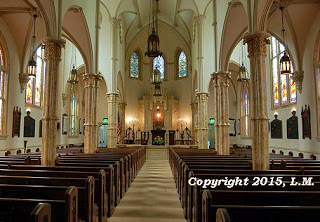 EVENTS: Here’s a rundown on my July events. I only have two as I am working full time these days on my next book, a biography of Barry Sadler, the Green Beret Army Sergeant who wrote and performed “The Ballad of the Green Berets,” the No. 1 song of the year 1966. Barry Sadler had an amazing life before, during and after that song became a cultural phenomenon. The pub date will be in the fall of 2016. Stay tuned.
EVENTS: Here’s a rundown on my July events. I only have two as I am working full time these days on my next book, a biography of Barry Sadler, the Green Beret Army Sergeant who wrote and performed “The Ballad of the Green Berets,” the No. 1 song of the year 1966. Barry Sadler had an amazing life before, during and after that song became a cultural phenomenon. The pub date will be in the fall of 2016. Stay tuned.
Thursday, July 2, a talk on my Francis Scott Key biography, What So Proudly We Hailed, and book signing at 12:00 noon at the Virginia Historical Society in Richmond. Info: www.vahistorical.org
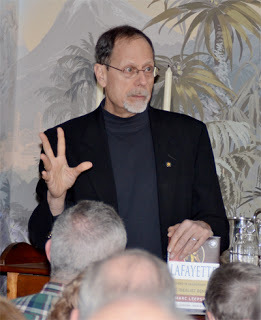
Sunday, July 5, a talk on Saving Monticello and book signing at the National Museum of American Jewish Military History, 1811 R Street, NW in Washington, D.C. The talk begins at 1:00 and is free and open to the public. Info: www.nmajmh.org
If you’d like to arrange an event for any of my books, email marc527psc@aol.com For more details on other upcoming events, go to http://bit.ly/SMOnline , the “Author Events” page on my website, www.marcleepson.com
Facebook, Twitter: If you’re on Facebook, please send me a friend request. If you’re on Twitter, I’d love to have you as a follower.
Gift Ideas: If you would like a personally autographed, brand-new paperback copy of Saving Monticello, e-mail me at Marc527psc@aol.com Or go to http://marcleepson.com/signedbooks.html to order copies through Second Chapter Books in Middleburg, Virginia. We also have copies of Desperate Engagement, Flag, Lafayette, and What So Proudly We Hailed.
Newsletter Editor - Marc Leepson
Volume XII, Number 7 July 1, 2015
FROM HARLEY LEWIS: I heard recently from Harley Lewis, Jefferson Levy’s great grandniece, and the member of her family who has taken the strongest interest in Uriah and Jefferson Levy’s Monticello legacy. After reading last month’s SM Newsletter, which featured the recent renovations of the upstairs rooms at Monticello, she wrote to me with memories of stories that her mother and grandmother told of visiting Monticello when Jefferson Levy owned the place in the late 19th and early 20th centuries.Mrs. Lewis wrote: “How I wish I could turn back the clock and be able to ask questions of my mother and grandmother on their stays at Monticello. It was to them just part of their life, not extraordinary and no different than going on vacation to the Jersey shore or Saratoga.”Harley Lewis’s mother—Jefferson Levy’s niece Frances Wolf Levy Lewis—loved visiting Monticello as a child. “It was a working farm and her fondest memories were the ponies and pony cart rides, along with the other livestock,” Harley Lewis told me.“However for her mother, my grandmother [Lillian Hendricks Wolf], it was a different story. She went as seldom as possible because of the logistics of packing and sending an entourage of servants, including two nursemaids for the children, the train ride to Charlottesville, horse-drawn carriages up the mountain, sleepless nights in sweltering hot bedrooms, plus a bathtub not to her liking [so] she had a lining made to fit its contours.”
Her grandmother and mother, Harley Lewis said, “often opted to remain in the comfort of her home and let my grandfather lead the expedition” from New York to Charlottesville.
INSIDE MIKVEH ISRAEL: I also heard recently from SM Newsletter subscriber Lorri Mills, who had visited Mikveh Israel, the Sephardic synagogue in Savannah. The third-oldest Jewish congregation in America, and the first in Georgia, it was founded in July of 1735 by Uriah Levy’s great, great grandfather Dr. Samuel Nunez, and a group of other Jews who came there in the summer of 1733, fleeing Portugal and the Spanish Inquisition. The magnificent current Neo-Gothic building was consecrated in 1878.Ms. Mills kindly gave me permission to use these this photo of the inside of that historic building.
 EVENTS: Here’s a rundown on my July events. I only have two as I am working full time these days on my next book, a biography of Barry Sadler, the Green Beret Army Sergeant who wrote and performed “The Ballad of the Green Berets,” the No. 1 song of the year 1966. Barry Sadler had an amazing life before, during and after that song became a cultural phenomenon. The pub date will be in the fall of 2016. Stay tuned.
EVENTS: Here’s a rundown on my July events. I only have two as I am working full time these days on my next book, a biography of Barry Sadler, the Green Beret Army Sergeant who wrote and performed “The Ballad of the Green Berets,” the No. 1 song of the year 1966. Barry Sadler had an amazing life before, during and after that song became a cultural phenomenon. The pub date will be in the fall of 2016. Stay tuned.Thursday, July 2, a talk on my Francis Scott Key biography, What So Proudly We Hailed, and book signing at 12:00 noon at the Virginia Historical Society in Richmond. Info: www.vahistorical.org

Sunday, July 5, a talk on Saving Monticello and book signing at the National Museum of American Jewish Military History, 1811 R Street, NW in Washington, D.C. The talk begins at 1:00 and is free and open to the public. Info: www.nmajmh.org
If you’d like to arrange an event for any of my books, email marc527psc@aol.com For more details on other upcoming events, go to http://bit.ly/SMOnline , the “Author Events” page on my website, www.marcleepson.com
Facebook, Twitter: If you’re on Facebook, please send me a friend request. If you’re on Twitter, I’d love to have you as a follower.
Gift Ideas: If you would like a personally autographed, brand-new paperback copy of Saving Monticello, e-mail me at Marc527psc@aol.com Or go to http://marcleepson.com/signedbooks.html to order copies through Second Chapter Books in Middleburg, Virginia. We also have copies of Desperate Engagement, Flag, Lafayette, and What So Proudly We Hailed.
Published on July 17, 2015 12:43
June 1, 2015
June 1, 2015
Saving Monticello: The NewsletterThe latest about the book, author events, and moreNewsletter Editor - Marc Leepson
Volume XII, Number 6 June 1, 2015
UPSTAIRS, DOWNSTAIRS: When I was doing the research for Saving Monticello in 1999 and 2000, I had several meetings with Susan Stein, the renowned curator on Jefferson’s Mountain. We met in her small office located upstairs on the second floor of Thomas Jefferson’s Essay in Architecture. The rest of the rooms up there—bedrooms in Thomas Jefferson’s day—remained empty and unvisited as the second floor (including the Dome Room) was closed to the public.
The rooms upstairs remained all but empty for years after Susan moved her office elsewhere on the property. But several years ago, the Thomas Jefferson Foundation began restoring several of the upstairs rooms and offering special tours. Then, on May 2, the Foundation announced what’s being called a “milestone” in their mission to restore Monticello to what the place looked like when Thomas Jefferson lived there.
Called “The Mountaintop Project,” the milestone consists of the full restoration and furnishing of nine upstairs rooms. Those are the bedrooms where Thomas Jefferson’s grown daughter Martha Randolph and her eleven children lived after Jefferson’s wife (also Martha) had died and his daughter Martha—known as Patsy as a child—brought her family to her childhood home to live.
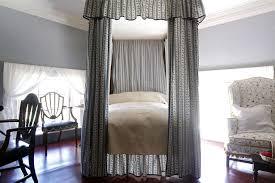
“It’s the first time in ninety-two years we’ve seen the upstairs rooms fully furnished,” said Leslie Greene Bowman, the Foundation’s president and CEO.
Those newly restored and furnished bedrooms are where Patsy and her children moved when her father retired from the presidency in 1809 and came back to Monticello to live there full time.
Martha and the children were living there when she was forced to sell Monticello in 1831, five years after Thomas Jefferson’s death, to try to pay off the debts she inherited from her father—a story I tell in detail in Saving Monticello.
The Mountaintop Project also includes the recreation of two log cabins along Mulberry Row (where Uriah Levy’s mother Rachel is buried) where John and Priscilla Hemings, an enslaved couple, lived, as well as a workshop. This “allows us to tell the stories of the family, servants, and slaves who lived and worked in those rooms and gives a fuller picture of what life at Monticello was really like,” Leslie Bowman said.
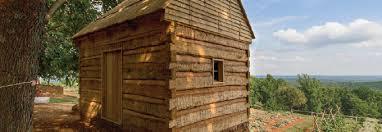
The main benefactor of the Mountaintop Project, David M. Rubenstein, the co-founder of the Carlyle Group, made a big announcement at a dinner on May at Monticello: that he was donating $10 million to Monticello, matching the amount he gave the Foundation in 2013.
In 2013, Rubenstein told The Washington Post, he met with Leslie Bowman at Monticello, and—noticing that some rehab work needed to be done—said, “I’m happy to help in some way What would it take to fix it?”
“She said it would probably take about $20 million,” Rubenstein said. “I said, ‘Okay, let me give you ten, see what progress you make, and then if it works out, I’ll give you another ten.’”
“They did a very good job on the first ten,” he said, “and now this is the second ten.”
To which Bowman replied: “I’m almost speechless with excitement.”
EVENTS: Here’s a rundown on my June events, two of which deal with my book, Lafayette: Idealist General, in conjunction with the visit in June of the replica ship L’Hermione, which Lafayette sailed on his second trip to the U.S. in 1780.
Tuesday, June 9 – At 7:00 p.m. I’ll be introducing a film screening of the one-act play, Lafayette, at the Lyceum in Old Town Alexandria, Virginia. The historic building, which serves as Alexandria’s History Museum, is located at 201 South Washington Street. We’ll have a Q&A after the screening along with a book signing. Info: 703-746-4994Saturday, June 13 – 2:00 p.m. talk on Francis Scott Key and book signing at the Historical Society of Washington, D.C., 801 K Street, N.W. at Mount Vernon Square in Downtown D.C. Free and open to the public. Info, 202-249-3955Sunday, June 14 – 2:00 p.m. talk on Saving Monticello and book signing at historic Unison Store, 21028 Unison Road in Unison, Virginia, here in Western Loudoun County, Va. Free and open to the public. Info: www.unisonva.orgSaturday, June 20 – 2:00 p.m. talk and book signing on Lafayette at historic Oakwood near Warrenton, Virginia. For info on this fund-raising event for the Mosby Heritage Area Association, call 540-687-6681 or go to www.mosbyheritagearea.org
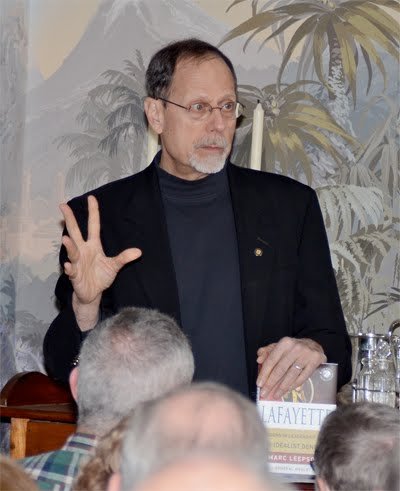
If you’d like to arrange an event for any of my books, email marc527psc@aol.com For more details on other upcoming events, go to http://bit.ly/SMOnline, the “Author Events” page on my website, www.marcleepson.com
Facebook, Twitter: If you’re on Facebook, please send me a friend request. If you’re on Twitter, I’d love to have you as a follower.
Gift Ideas: If you would like a personally autographed, brand-new paperback copy of Saving Monticello, e-mail me at Marc527psc@aol.com Or go to http://marcleepson.com/signedbooks.html to order copies through Second Chapter Books in Middleburg, Virginia. We also have copies of Desperate Engagement, Flag, Lafayette, and What So Proudly We Hailed.
Published on June 01, 2015 14:11
May 1, 2015
May 1, 2015
Saving Monticello: The NewsletterThe latest about the book, author events, and more
Newsletter Editor - Marc LeepsonVolume XII, Number 5 May 1, 2015
THE JEWS IN SAVANNAH: One thing that continues to fascinate me is the story of Uriah Levy’s great-great grandfather Dr. Samuel Nunez and his escape from the Inquisition in Portugal with his family first to England, and then to Savannah, Georgia, in 1733. I covered that in Saving Monticello, citing several sources, including “The Jews in Savannah,” an article in the November 1843 issue of The Occident and Jewish Advocate written by Mordecai Sheftall, a descendant of one of the families that came to Savannah with the Nunez family.
I dug that article out of one of the archives I visited when doing the research for the book. It’s now on line on the Jewish history.com website. That organization has, since 1998, been posting texts of historical documents that only had been available to the public in historical society and other archives or on microfilm. Here’s the link to the article: http://bit.ly/NunezSavannah

Mordecai Sheftall was a descendant of one of the Jewish families that arrived with the Nunezes in Savannah in 1733. His article was based on the records of his grandfather Benjamin Sheftall and his father, Levi Sheftall, who recorded “every important event connected with the condition of the Israelites: arrivals, departures, marriages, births, deaths, &c., to the first of July in the year 1808.”
The Jews who came to Savannah from London were a mixture of Sephardic and Ashkenasic. They “brought with them a Safer Tora, with two cloaks, and a Circumcision Box, which were given to them by Mr. Lindo, a merchant in London, for the use of the congregation they intended to establish,” the article notes.
The “Israelites who came to Savannah paid their passage,” the article says, “laid in all necessary supplies for their intended voyage, and were in nowise dependent on the favour or charity of the British crown for one dollar to facilitate their emigration.”
The passage across the Atlantic on The William and Sarah, Mr. Shaftell wrotes, “was a disagreeable and boisterous one; gale succeeded gale, and the ship came near being wrecked off the coast of North Carolina, and was forced to seek safety in ‘New Inlet,’ where she was necessarily detained for some weeks. She again set sail, and arrived and landed her passengers in Savannah on the 11th day of July, 1733.”
The first English settlers, led by James Oglethrope, had arrived at Yamacraw Bluff on the Savannah River just five months before, on February 13, 1733. That’s when they formed Georgia, the last of the original thirteen British North American colonies. The city’s lots were apportioned just days before the Jewish families arrived.

Soon after they arrived, in July of 1733, the Sephardic families decided to start a synagogue in a rented house on Market Square. They named it Kahal Kadosh Mickve Israel, “Holy Congregation, Hope of Israel.” That congregation, since 1878, has had its home in an imposing neo-Gothic building on Monterey Square (above). It was the first Jewish congregation in the American South, and is the third-oldest in the United States. The congregation still uses the 1733 torah in its annual Shabbat anniversary service.
Thanks to Shannon Foley Slaughter of the Descendants of Dr. Samuel Nunez Facebook Group for pointing me to the article.
EVENTS: Here’s a rundown on my May events, four of which deal with my book, Lafayette: Idealist General, in preparation for the visit in June of the replica ship L’Hermione, which Lafayette sailed on his second trip to the U.S. in 1780.· Saturday, May 2 – Book signing at the Gray Ghost Vineyards Civil War Authors Day, beginning a 11:00 a.m. 14706 Lee Highway, Amissville, Virginia. Info: 540- 937-4869. Or go to Tuesday, May 5 –talk on Saving Monticello for a Historic Preservation class at the University of Maryland, College Park, Md.Thursday, May 14 – 7:00 p.m. talk on the Marquis de Lafayette and book signing at the George Washington Masonic National Memorial, Alexandria, Virginia. Sponsored by the Alexandria-Caen Sister City Committee. Open to the public. Wine and dessert reception follows the talk. Info: http://herolafayette.eventbrite.comSaturday, May 16 – talk on Lafayette for the Washington, D.C., Eleanor Wilson DAR Chapter, Middleburg, VirginiaFriday, May 22 – 7:00 p.m. talk on Lafayette and book signing at the Free-Lance StarrBuilding, Fredericksburg, Virginia, sponsored by the Fredericksburg Sister City Association. 616 Amelia Street, Fredericksburg, Va. Free, open to the public.Sunday, Mar 24 – 3:00 p.m. talk on Lafayette and book signing at York Hall, Yorktown, Virginia, sponsored by the York County Historical Committee. 301 Main St., Yorktown, Va.Info: 757-890-3508. Free, open to the public.

Published on May 01, 2015 14:20
April 1, 2015
April 1, 2015
Saving Monticello: The NewsletterThe latest about the book, author events, and more
Newsletter Editor - Marc LeepsonVolume XII, Number 4 April 1, 2015
ON JEFFERSON LEVY: In my ongoing quest to discover all there is to know about the Levy family that didn’t make it into Saving Monticello, I recently came across two items dealing with Jefferson Levy that shed light on his character and personality.
The first is a newspaper account that contains his strong reaction to the momentous December 10, 1912, vote in the House of Representatives. That’s the one that defeated a resolution that would have condemned Monticello, taken in from Levy, and made into a government-run shrine to Thomas Jefferson. As I noted in the book, the bill went down 141-101.
Jefferson Levy was a member of the House at the time. Naturally, he voted against the bill that would have taken Monticello from him. And why not—he had owned Monticello since 1879 and had spent hundreds of thousands of dollars repairing, restoring, preserving and furnishing Jefferson’s Essay in Architecture.

In the book I described Levy’s reaction after the vote by quoting from The New York Times, which reported that he was “jubilant.” The paper went on to say that Levy “issued a statement saying he was grateful for the support he had received ‘during this trying ordeal.’”
I left the rest of the quote out of the book. But when I recently re-read it, I was intrigued by what he said. Here’s the entire quote, in which Jefferson Levy addresses the baseless charges that he wouldn’t let members of the public onto the grounds of Monticello and that he made things difficult for Jefferson descendants when they wanted to visit the family cemetery on the grounds of Monticello.
“I am deeply grateful to the American people for their thoughtful consideration during this trying ordeal, when it has been sought to take from me against my will property which I love both because of its association with that great statesman, Thomas Jefferson, and because to me it answers to the name of home, which all that word signifies to anyone.
“Of Monticello it may well be said that under private ownership it has been more available to the public than has Mount Vernon, in that no one desiring to pay a tribute to the memory of Thomas Jefferson has been turned aside nor fee accepted from his hand.”
A little deconstruction of that statement is in order. First, using the phrase “trying ordeal” confirms what I’ve gleaned elsewhere that the stern and driven businessman was deeply hurt by the effort to take Monticello from him.
Second, I strongly doubt that that “the American people” provided significant “consideration” to Levy during that year as the campaign to take Monticello from him reached the halls of Congress. Levy did have support on Capitol Hill (as evidenced by the vote), but I didn’t find much, if any, outpouring for him from “the American people” to keep Monticello as his private home.
Speaking of his “home,” Monticello was not it. Jefferson Levy used the place as his vacation getaway, visiting regularly, but his true home was in New York City. Still, as Levy had owned and lived in Monticello (at times) for thirty-three years, it is very possible that he considered it at least one of his homes.
Lastly, it also is true that Jefferson Levy did allow visitors (bidden and unbidden) to visit the grounds at Monticello. However, at one time he did charge a nominal fee, much as was the case at Mount Vernon.
Fast forward to February 1919 after Jefferson Levy had fended off the effort to take Monticello from him. I found an article in the Cavalier Daily of March 1 that shed some positive light on the owner of Monticello. It seems that President Woodrow Wilson had just had a stroke (he would have a much more serious one in October) and the article reported that Levy offered Monticello as a place for Wilson “to recover from his illness.”
Wilson, for one thing, “was feeling much better,” according to his family physician, Dr. Cary Grayson, the article noted.
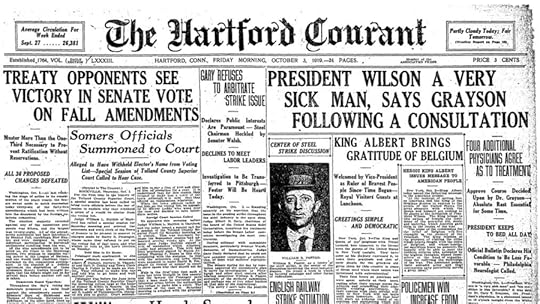
That generous offer from one Democratic politician to another was turned down.
And the President also “made it a rule since he entered the White House not to accept the hospitality of any except members of his family and those who were his intimate friends before he became executive.”That dictum, the article noted, “would prevent his accepting Mr. Levy’s offer.”
EVENTS: Here’s a rundown on my April events.· Saturday and Sunday, April 11 and 12 – Talks at 3:00 p.m. on Saturday and 1:00 p.m on Sunday on the Marquis de Lafayette at the aptly named Lafayette Inn and Restaurant in Stanardsville, Virginia. For info, call 434-985-6345 or go to www.thelafayetteinn.comTuesday, April 14 – evening talk on Francis Scott Key at Shenandoah University, Winchester, Virginia. Free and open to the publicSunday, April 26 – Afternoon talk for the Loudoun County Fine Arts Association

Published on April 01, 2015 14:21
March 1, 2015
March 1, 2015
Saving Monticello: The NewsletterThe latest about the book, author events, and more
Newsletter Editor - Marc LeepsonVolume XII, Number 3 March 1, 2015
SM in the NYT: Three weeks ago I was very pleasantly surprised to read a terrific article in The New York Times on a topic I know quite well and am greatly interested in. Entitled “The Near Death, and Revival, of Monticello,” the article, by the noted presidential scholar Michael Beschloss, was, in essence, a 925-word distillation of the main points of Saving Monticello.
To his credit, Beschloss (in the photo below, speaking at the 2008 dedication of the Monticello Visitors Center) cited the book in the article.
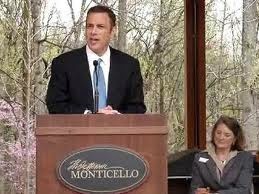 I am pleased to report that the mention of Saving Monticello—along with a little help from Facebook, Twitter and replies to comments on the NYT web site by yours truly—created a small buzz for my book in February 2015, something that pleases the author of a book that was published in 2001.
I am pleased to report that the mention of Saving Monticello—along with a little help from Facebook, Twitter and replies to comments on the NYT web site by yours truly—created a small buzz for my book in February 2015, something that pleases the author of a book that was published in 2001.
Virtually all of the facts in the article may be found in Saving Monticello. That includes Beschloss’s opening statement that in 1876, fifty years after Jefferson’s death, Monticello “was enmeshed in weeds, with the main house in danger of collapse.” He goes on to say that—as I amply show in the book—that situation stemmed from “Jefferson’s propensity to play fast and loose with his personal finances.”
He notes, as I reported, that Jefferson left his heirs with $107,000 in debts, that his slaves (and other possessions) were auctioned off in 1827, and that Monticello was put up for sale. There were not takes for years, he wrote, because “the site was hilly and remote, and such iconoclastic Jeffersonian details as narrow staircases and ill-defined bedrooms struck some well-heeled Virginia couples as the enemy of gracious living.”
Bescloss reports that Jefferson’s daughter Martha sold Monticello and its remaining 522 acres for $7,000 to James Turner, “an eccentric local druggist whom Martha Jefferson Randolph considered to be a madman.” And that in 1834 Barclay sold the place to Uriah Phillips Levy, “who braved anti-Semitism in the United States Navy to become the first Jewish commodore, and also helped persuade Congress to end the naval practice of flogging.”
Beschloss (a former Monticello trustee) notes that Uriah Levy willed Monticello “to the federal government as a school for Navy orphans” in 1862, and that after Levy’s death, “Thanks to souvenir-seekers and vandals, the estate soon became, as one visitor recalled, ‘an absolute ruin,’ with caretakers herding cattle during the winter into Jefferson’s old basement.”
He reports that Jefferson Monroe Levy bought out the other heirs for $10,050 in 1879 and vowed “to restore Monticello ‘to the original plans and style,’ and within a decade, “a visiting reporter [magazine writer Frank Stockton, as I note in the book] found it ‘as sound and substantial a country mansion as it ever was.’” Then he covers the attempt led by Maud Littleton in 1912 to take Monticello from Jefferson Levy and turn it into a government-run shrine to Thomas Jefferson.
That’s where Beschloss quotes me. “Marc Leepson wrote in his 2001 book, Saving Monticello, that there was a ‘strong anti-Semitic subtext in Mrs. Littleton’s campaign,’ with its ‘themes of greed, selfishness and lack of patriotism.’” I thank him for that.
This narrative of the Levy family ends with: “Monticello never became a Camp David, but [Jefferson] Levy finally relaxed his opposition to the notion of the old house as a public museum. By 1923, money was raised through national subscriptions to compensate the 71-year-old Levy for Monticello. He died the following year.”
To read the entire article, go to http://bit.ly/BeschlossSM
EVENTS: Here’s a rundown on my March events. Most are in conjunction with my latest book, What So Proudly We Hailed: Francis Scott Key, A Life.
 · Tuesday, March 3 – Talk on Francis Scott Key for a the Ketoctin DAR Chapter in Leesburg, VirginiaSaturday, March 14 – Talk on Francis Scott Key for the Baltimore DAR Chapter in MarylandTuesday, March 17 – Talk on Francis Scott Key at the Annual Meeting and Dinner of the General Society of the War of 1812, Washington, D.C.Wednesday, March 18 – Panel on Vietnam War Literature, 2:00 p.m., University of Virginia Bookstore, as part of the Virginia Festival of the Book, Charlottesville, Virginia. Free and open to the public. Info: http://bit.ly/VABookWarLitThursday, March 19 – Panel on Early American Lives: Francis Scott Key and Cadwallader Colden, 2:00 p.m., University of Virginia Harrison Institute at the Small Special Collections Library, U-Va. Central Grounds, as part of the Virginia Festival of the Book, Charlottesville,Virginia. Free and open to the public. Info: http://bit.ly/VABookFSKFriday, March 20 – Talk on researching primary source documents at Charlottesville High SchoolWednesday, March 25 – Talk on Lafayette, George Military College, Milledgeville, GeorgiaSunday, March 28 – Presentation of researching history at Writers Project Runway conference, Ida Lee Recreation Center, 60 Ida Lee Drive, NW, Leesburg, Virginia.Tuesday, March 31 – 7:00 p.m. talk on Francis Scott Key at the Beatley Central Library, 5005 Duke Street, Alexandria, Virginia. Free and open to the public.
· Tuesday, March 3 – Talk on Francis Scott Key for a the Ketoctin DAR Chapter in Leesburg, VirginiaSaturday, March 14 – Talk on Francis Scott Key for the Baltimore DAR Chapter in MarylandTuesday, March 17 – Talk on Francis Scott Key at the Annual Meeting and Dinner of the General Society of the War of 1812, Washington, D.C.Wednesday, March 18 – Panel on Vietnam War Literature, 2:00 p.m., University of Virginia Bookstore, as part of the Virginia Festival of the Book, Charlottesville, Virginia. Free and open to the public. Info: http://bit.ly/VABookWarLitThursday, March 19 – Panel on Early American Lives: Francis Scott Key and Cadwallader Colden, 2:00 p.m., University of Virginia Harrison Institute at the Small Special Collections Library, U-Va. Central Grounds, as part of the Virginia Festival of the Book, Charlottesville,Virginia. Free and open to the public. Info: http://bit.ly/VABookFSKFriday, March 20 – Talk on researching primary source documents at Charlottesville High SchoolWednesday, March 25 – Talk on Lafayette, George Military College, Milledgeville, GeorgiaSunday, March 28 – Presentation of researching history at Writers Project Runway conference, Ida Lee Recreation Center, 60 Ida Lee Drive, NW, Leesburg, Virginia.Tuesday, March 31 – 7:00 p.m. talk on Francis Scott Key at the Beatley Central Library, 5005 Duke Street, Alexandria, Virginia. Free and open to the public.
If you’d like to arrange an event for any of my books, email marc527psc@aol.com For more details on other upcoming events, go to http://bit.ly/SMOnline , the “Author Events” page on my website, www.marcleepson.com
Newsletter Editor - Marc LeepsonVolume XII, Number 3 March 1, 2015
SM in the NYT: Three weeks ago I was very pleasantly surprised to read a terrific article in The New York Times on a topic I know quite well and am greatly interested in. Entitled “The Near Death, and Revival, of Monticello,” the article, by the noted presidential scholar Michael Beschloss, was, in essence, a 925-word distillation of the main points of Saving Monticello.
To his credit, Beschloss (in the photo below, speaking at the 2008 dedication of the Monticello Visitors Center) cited the book in the article.
 I am pleased to report that the mention of Saving Monticello—along with a little help from Facebook, Twitter and replies to comments on the NYT web site by yours truly—created a small buzz for my book in February 2015, something that pleases the author of a book that was published in 2001.
I am pleased to report that the mention of Saving Monticello—along with a little help from Facebook, Twitter and replies to comments on the NYT web site by yours truly—created a small buzz for my book in February 2015, something that pleases the author of a book that was published in 2001.Virtually all of the facts in the article may be found in Saving Monticello. That includes Beschloss’s opening statement that in 1876, fifty years after Jefferson’s death, Monticello “was enmeshed in weeds, with the main house in danger of collapse.” He goes on to say that—as I amply show in the book—that situation stemmed from “Jefferson’s propensity to play fast and loose with his personal finances.”
He notes, as I reported, that Jefferson left his heirs with $107,000 in debts, that his slaves (and other possessions) were auctioned off in 1827, and that Monticello was put up for sale. There were not takes for years, he wrote, because “the site was hilly and remote, and such iconoclastic Jeffersonian details as narrow staircases and ill-defined bedrooms struck some well-heeled Virginia couples as the enemy of gracious living.”
Bescloss reports that Jefferson’s daughter Martha sold Monticello and its remaining 522 acres for $7,000 to James Turner, “an eccentric local druggist whom Martha Jefferson Randolph considered to be a madman.” And that in 1834 Barclay sold the place to Uriah Phillips Levy, “who braved anti-Semitism in the United States Navy to become the first Jewish commodore, and also helped persuade Congress to end the naval practice of flogging.”
Beschloss (a former Monticello trustee) notes that Uriah Levy willed Monticello “to the federal government as a school for Navy orphans” in 1862, and that after Levy’s death, “Thanks to souvenir-seekers and vandals, the estate soon became, as one visitor recalled, ‘an absolute ruin,’ with caretakers herding cattle during the winter into Jefferson’s old basement.”
He reports that Jefferson Monroe Levy bought out the other heirs for $10,050 in 1879 and vowed “to restore Monticello ‘to the original plans and style,’ and within a decade, “a visiting reporter [magazine writer Frank Stockton, as I note in the book] found it ‘as sound and substantial a country mansion as it ever was.’” Then he covers the attempt led by Maud Littleton in 1912 to take Monticello from Jefferson Levy and turn it into a government-run shrine to Thomas Jefferson.
That’s where Beschloss quotes me. “Marc Leepson wrote in his 2001 book, Saving Monticello, that there was a ‘strong anti-Semitic subtext in Mrs. Littleton’s campaign,’ with its ‘themes of greed, selfishness and lack of patriotism.’” I thank him for that.
This narrative of the Levy family ends with: “Monticello never became a Camp David, but [Jefferson] Levy finally relaxed his opposition to the notion of the old house as a public museum. By 1923, money was raised through national subscriptions to compensate the 71-year-old Levy for Monticello. He died the following year.”
To read the entire article, go to http://bit.ly/BeschlossSM
EVENTS: Here’s a rundown on my March events. Most are in conjunction with my latest book, What So Proudly We Hailed: Francis Scott Key, A Life.
 · Tuesday, March 3 – Talk on Francis Scott Key for a the Ketoctin DAR Chapter in Leesburg, VirginiaSaturday, March 14 – Talk on Francis Scott Key for the Baltimore DAR Chapter in MarylandTuesday, March 17 – Talk on Francis Scott Key at the Annual Meeting and Dinner of the General Society of the War of 1812, Washington, D.C.Wednesday, March 18 – Panel on Vietnam War Literature, 2:00 p.m., University of Virginia Bookstore, as part of the Virginia Festival of the Book, Charlottesville, Virginia. Free and open to the public. Info: http://bit.ly/VABookWarLitThursday, March 19 – Panel on Early American Lives: Francis Scott Key and Cadwallader Colden, 2:00 p.m., University of Virginia Harrison Institute at the Small Special Collections Library, U-Va. Central Grounds, as part of the Virginia Festival of the Book, Charlottesville,Virginia. Free and open to the public. Info: http://bit.ly/VABookFSKFriday, March 20 – Talk on researching primary source documents at Charlottesville High SchoolWednesday, March 25 – Talk on Lafayette, George Military College, Milledgeville, GeorgiaSunday, March 28 – Presentation of researching history at Writers Project Runway conference, Ida Lee Recreation Center, 60 Ida Lee Drive, NW, Leesburg, Virginia.Tuesday, March 31 – 7:00 p.m. talk on Francis Scott Key at the Beatley Central Library, 5005 Duke Street, Alexandria, Virginia. Free and open to the public.
· Tuesday, March 3 – Talk on Francis Scott Key for a the Ketoctin DAR Chapter in Leesburg, VirginiaSaturday, March 14 – Talk on Francis Scott Key for the Baltimore DAR Chapter in MarylandTuesday, March 17 – Talk on Francis Scott Key at the Annual Meeting and Dinner of the General Society of the War of 1812, Washington, D.C.Wednesday, March 18 – Panel on Vietnam War Literature, 2:00 p.m., University of Virginia Bookstore, as part of the Virginia Festival of the Book, Charlottesville, Virginia. Free and open to the public. Info: http://bit.ly/VABookWarLitThursday, March 19 – Panel on Early American Lives: Francis Scott Key and Cadwallader Colden, 2:00 p.m., University of Virginia Harrison Institute at the Small Special Collections Library, U-Va. Central Grounds, as part of the Virginia Festival of the Book, Charlottesville,Virginia. Free and open to the public. Info: http://bit.ly/VABookFSKFriday, March 20 – Talk on researching primary source documents at Charlottesville High SchoolWednesday, March 25 – Talk on Lafayette, George Military College, Milledgeville, GeorgiaSunday, March 28 – Presentation of researching history at Writers Project Runway conference, Ida Lee Recreation Center, 60 Ida Lee Drive, NW, Leesburg, Virginia.Tuesday, March 31 – 7:00 p.m. talk on Francis Scott Key at the Beatley Central Library, 5005 Duke Street, Alexandria, Virginia. Free and open to the public.If you’d like to arrange an event for any of my books, email marc527psc@aol.com For more details on other upcoming events, go to http://bit.ly/SMOnline , the “Author Events” page on my website, www.marcleepson.com
Published on March 01, 2015 14:22
February 1, 2015
February 1, 2015
Saving Monticello: The NewsletterThe latest about the book, author events, and moreNewsletter Editor - Marc LeepsonVolume XII, Number 2 February 1, 2015
‘THE SALE OF MONTICELLO’: That was the headline in an article published on December 1, 1864, in The New York Times. The sale in question had taken place on November 17, 1864. It was the hill-top auction in which the Confederate States of America (which had confiscated Monticello during the Civil War because it was owned by a northerner, Uriah Levy), sold Thomas Jefferson’s house and Uriah Levy’s Monticello possessions to CSA Col. Benjamin Franklin Ficklin of the 50th Virginia Regiment. The price: $80,500 in Confederate money.
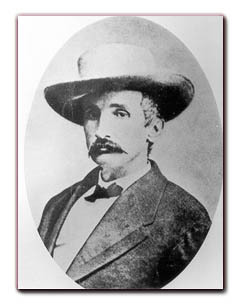 As I noted in Saving Monticello, the CSA had taken control of the place early in the war, but only got serious about selling Monticello in the fall of 1864 when the South’s treasury was in dire need of cash. Uriah Levy had died in 1862. George Carr, his Charlottesville lawyer, had been fighting a legal battle to prevent the South from selling Monticello.
As I noted in Saving Monticello, the CSA had taken control of the place early in the war, but only got serious about selling Monticello in the fall of 1864 when the South’s treasury was in dire need of cash. Uriah Levy had died in 1862. George Carr, his Charlottesville lawyer, had been fighting a legal battle to prevent the South from selling Monticello.The CSA sued Carr and Monticello’s caretaker, Joel Wheeler, and prevailed. Soon thereafter, an advertisement appeared in the Richmond Enquirer. The sale would take place at Monticello, “a large and commodious Brick Dwelling House,” the ad said, “late the property of Captain U.P. Levy, deceased, an alien enemy.”
The New York Times account of that day’s events reported that “a large number of people” were present. That included Uriah Levy’s youngest brother, Jonas Phillips Levy, who was living in Wilmington, North Carolina. Jonas P. Levy (the father of Jefferson M. Levy), was a born and bred northerner who had fought in the Mexican War as the commander of the USS America.
The article, based on an account in the Lynchburg, Virginia, Republic, notes that Jonas Levy spoke to the crowd before the auction began, saying he did not show up “to interfere with or prevent the sale in any way, and that while he for the present waived his rights in the premises, he intended to bid for the property himself.” After the deputy marshal running the auction reminded the crowd that the Jefferson family graveyard was not part of the sale, Jonas Levy spoke up again about the fact that his mother’s grave would be part of the deal.
“Captain Levy,” the account says, “said his mother was also interred on the place, and he hoped whoever became the purchaser of Monticello would let her rest in peace.”First Monticello was auctioned off. The first bid was $20,000. Jonas Levy was not the successful bidder, although he did come away with two of Uriah Levy’s former possessions: a slave and a model of his brother’s last ship, the Vandalia. Of Uriah Levy’s nineteen slaves, the “first negro man, Fuke, brought $7,000,” the article says. “The next, Fleming, $7,450; Lewis, $7,350; John, sold to Capt. Jonas P. Levy for $5,400.” A “negro woman with seven children, one at the breast,” sold for $23,100. Three “girls, from five to nine years old,” went for $11,000, and “two smaller girls” for $3,200.
 Col. Ficklin also bought a bust of Jefferson, “which stood in the hall on a fluted Corinthian pedestal,” for $50. A pianoforte was sold for $5,000; a marble-topped sideboard for $510. Jonas Levy got the Vandalia model for $100. Other items sold that day included a washstand, cows, oxen, shoats, and a threshing machine. The total take was estimated to be $350,000.
Col. Ficklin also bought a bust of Jefferson, “which stood in the hall on a fluted Corinthian pedestal,” for $50. A pianoforte was sold for $5,000; a marble-topped sideboard for $510. Jonas Levy got the Vandalia model for $100. Other items sold that day included a washstand, cows, oxen, shoats, and a threshing machine. The total take was estimated to be $350,000.The article ends with a lament about how Jefferson’s gravestone had been defaced by people who took chippings from it, and how, visitors had scribbled their names on Monticello’s walls. “Hundreds of them can be seen and read on each side of the front entrance to the hall,” the article said, “pieces of the bust of Mr. JEFFERSON were chipped off; chairs, tables, mirrors, vases, broken and destroyed; and in some cases mementoes of rare virtue and art have been purloined, while the family resided here as well as in their absence.
“Shame! shame upon our thoughtless countrymen. Why should they be so disrespectful to the sepulcher of the great patriot of the Revolution?”To read the entire article, go to http://bit.ly/1864sale
MAGNET ON MONTICELLO: In a blog post last fall titled “How Private Philanthropy Saved the Founders’ Homes: Mount Vernon and Monticello Nearly Vanished” Myron Magnet, the author of The Founders at Home: The Building of America, 1735-1817 (2013), writes about how the homes of George Washington and Thomas Jefferson came to be the beautifully restored presidential house museums they are today.
Mr. Magnet’s account of the saving of Monticello leans heavily on Saving Monticello, a fact that he kindly notes.
To wit: After talking about Jefferson granddaughter Virginia Trist speculating that Uriah Levy was considering marrying one of her sisters (which I cover in the book), he writes: “But nothing came of the notion, though Levy stayed on friendly terms with Jefferson’s descendants for many years, as Marc Leepson reports in his invaluable account of the Levy family’s 89-year tenure at Monticello, Saving Monticello.”
You can read the entire post at http://bit.ly/MagnetMonticello
EVENTS: Here’s a rundown on my February events. All but one are for my latest book, What So Proudly We Hailed: Francis Scott Key, A Life.
Monday, February 9 – Talk on Francis Scott Key for a woman’s book club in Middleburg,VirginiaSaturday, February 14 – Talk on Francis Scott Key for the Providence DAR Chapter, Fairfax, VirginiaTuesday, February 17 – Talk on Francis Scott Key at the Annual Meeting and Dinner of the General Society of the War of 1812, Washington, D.C.Saturday, February 21 – Talk on Francis Scott Key for the Cameron Parish DAR Chapter, Chantilly, VirginiaMonday, February 23 – Talk on Saving Monticello, The Village On Pheasant Ridge, Roanoke, VirginiaTuesday, February 24 – Talk on Francis Scott Key, The Glebe, Daleville, VirginiaTuesday, February 24 – Talk on Francis Scott Key, Runk and Pratt at Liberty Ridge, Lynchburg, Virginia.

If you’d like to arrange an event for any of my books, email marc527psc@aol.com For more details on other upcoming events, go to http://bit.ly/SMOnline which is the “Author Events” page on my website, www.marcleepson.com
Published on February 01, 2015 14:26
January 1, 2015
January 1, 2015
Saving Monticello: The NewsletterThe latest about the book, author events, and moreNewsletter Editor - Marc LeepsonVolume XII, Number 1 January 1, 2015
SELLING MONTICELLO: As I wrote in Saving Monticello, in the spring of 1919 Jefferson Monroe Levy, who had owned Thomas Jefferson’s house since acquiring it from the estate of his uncle Uriah Phillips Levy in 1879, hired a realtor to try to sell the place. Levy, a boom-and-bust real estate and stock speculator, had extreme financial reverses during World War I. He listed the property with H.W. Hilleary, a real estate broker in Washington, D.C., who also had offices in Warrenton, Leesburg, and Charlottesville, Virginia. Hilleary specialized in selling large country estates in the Old Dominion.
Hilleary produced a sales brochure, but did not publicly advertise for several years after listing the property. Instead, beginning in April of 1919, he sent prospecting letters to upper crust individuals around the country. There were several versions, but most contained words such as:
“You are familiar, I am sure, with ‘Monticello,’ in the beautiful County of Albemarle, near the University of Virginia, also designed by Thomas Jefferson. This historic home, this architectural gem, this most picturesque estate, I have the privilege of offering.
The present owner, for sentimental and other reasons, has never consented to part with it. I am allowed now to bring it to the attention of those who can appreciate and are able to own a property of such distinction and merit.
If interested, I shall be glad to give you detailed information and to quote the authorized price.”
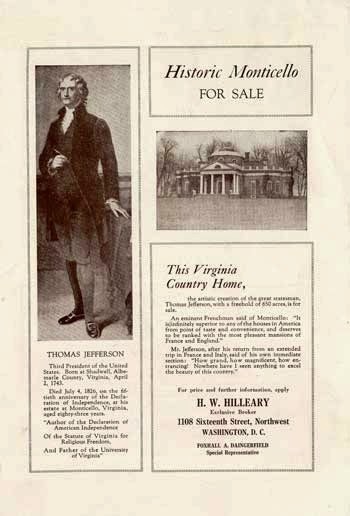 I found several of those letters in the files at the Thomas Jefferson Foundation while researching the book.
I found several of those letters in the files at the Thomas Jefferson Foundation while researching the book.A few weeks ago, I exchanged emails with Herb Motley, a member of the Society of the Cincinnati. Mr. Motley had contacted Ellen Clark, the librarian at the Society’s headquarters in Washington, D.C., with a question about two letters about Monticello that he had found at the Minnesota Historical Society. They were written in 1921. Ms. Clark kindly put Mr. Motley in touch with me and he sent me scanned copies of the letters.
They were written to Mr. Motley’s wife’s great grandfather, T.B.Walker, an extremely wealthy Minnesota timber baron and art collector. I hadn't seen them before. But they fit in with what I did find and what I wrote in the book. One of them is a letter from the real estate office of Herbert A. Sherman in New York City sent to Mr. Walker on July 27, 1921. The letter was signed by Howard Davis.
In it, Mr. Davis writes that Jefferson Levy “stopped at my office this morning.” Many efforts, Davis wrote, “have been made in the past to buy this place, but Mr. Levy has not until now been inclined to sell. He told me he would take $1,000,000 for it.”
Two things stand out in that letter. First, Levy most certainly was inclined to sell Monticello as early as 1914. That’s when he responded to repeated overtures from Congress to have the nation take it over as a shrine to Thomas Jefferson—efforts that Levy at first strongly resisted. Congress never did buy the place. Then, as noted above, Levy hired Hilleary to sell Monticello in 1919.
Second, Hilleary was offering Monticello, along with more than six hundred acres surrounding it and all of its furniture and furnishings for $500,000—less than half of what Mr. Davis said Jefferson Levy told him “he would take.”
The second letter, below, is from Hilleary to Thomas B. Walker, dated July 19, 1921. It mentions no price and contains just about the same language Hilleary used in his other prospecting letters to other wealthy Americans, including at least one member of the DuPont family in Delaware.

A VIRGINIA VIEW: Now on view at the Virginia Museum of Fine Arts in Richmond: “Twelve Views of Virginia” by the California Japanese-American artist Miwako Nishizawa. The artist, who specializes in the traditional shin-hanga woodblock technique, was commissioned to execute twelve Virginia views in that style. One of them is of Thomas Jefferson’s Monticello (below). The exhibit is on view until March 29. For more info, go to http://bit.ly/VaViews

EVENTS: Only one in January: a talk on my latest book, What So Proudly We Hailed: Francis Scott Key, A Life on Wednesday, January 14 at 11:00 a.m. talk for the Tuckahoe Woman’s Club in Richmond, Virginia.
Please email me if you’d like to arrange an event for that book—or for any of my other books, including Saving Monticello, at marc527psc@aol.com For more details on other upcoming events, go to http://bit.ly/SMOnline That’s the “Author Events” page on my website, www.marcleepson.com
Published on January 01, 2015 14:29
January 1, 2008
Saving Monticello: The NewsletterThe latest about the boo...
Saving Monticello: The Newsletter
The latest about the book, author events, and more
Newsletter Editor - Marc Leepson
Volume VI, Number 6 June 1, 2009
The New Film: I wholeheartedly agree with the positive reviews from the critics and from just plain folks about the new introductory film and the four extensive new exhibits at the new Monticello Visitor Center (below). I had a good conversation about them with Susan Stein, Monticello's curator whose areas
The latest about the book, author events, and more
Newsletter Editor - Marc Leepson
Volume VI, Number 6 June 1, 2009
The New Film: I wholeheartedly agree with the positive reviews from the critics and from just plain folks about the new introductory film and the four extensive new exhibits at the new Monticello Visitor Center (below). I had a good conversation about them with Susan Stein, Monticello's curator whose areas
Published on January 01, 2008 11:44
December 28, 2007
Saving Monticello: The NewsletterThe latest about the boo...
Saving Monticello: The Newsletter
The latest about the book, author events, and more
Newsletter Editor - Marc Leepson
Volume IV, Number 12 December 1, 2007
NYT Historical: One of the best things that happened to me while I was doing the research for Saving Monticello seven years ago came when my local library system in Loudoun County, Virginia, subscribed to the Proquest historical newspaper database. When that happened, I had, as a library card holding patron, immediate (and free) access thro
Published on December 28, 2007 06:40



